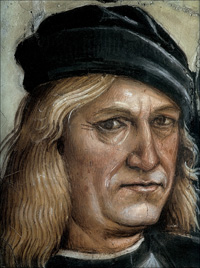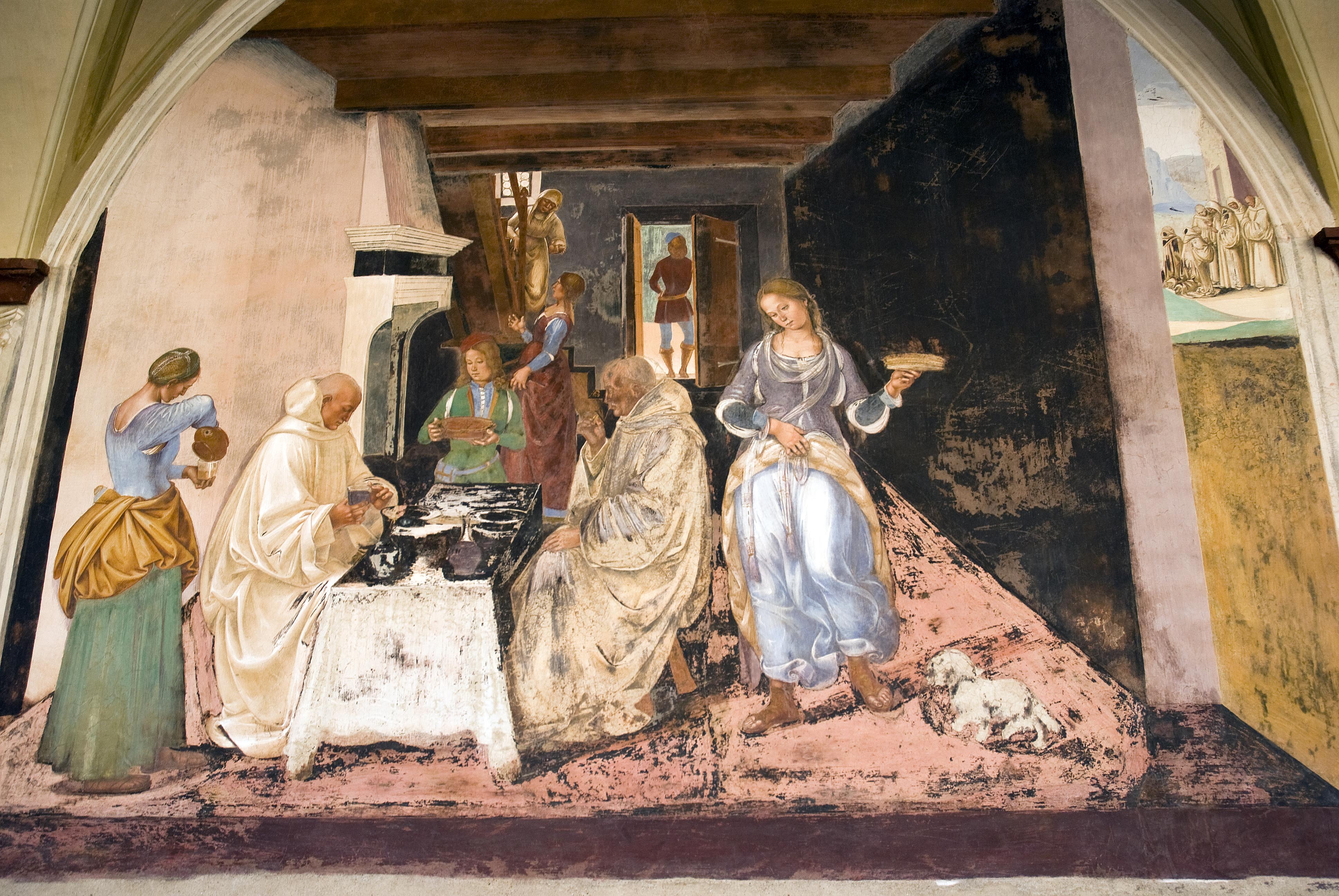| N L |
Luca Signorelli, ciclo di affreschi nel Chiostro Grande dell'Abbazia di Monte Oliveto Maggiore, le storie di San Benedetto, Scena 25 - Come Benedetto dice alli monaci dove e quando avevano mangiato fuori dal monastero (1)
|
Luca Signorelli Le storie di San Benedetto, Scena 25 - Come Benedetto dice alli monaci dove e quando avevano mangiato fuori dal monastero | Chiostro grande del monastero di Monte Oliveto Maggiore Life of St Benedict, Scene 25: Benedict Tells Two Monks What They Have Eaten | The Great Cloister, Abbey of Monte Oliveto Maggiore |
The life of St Benedict is considered as a reflection and ideal of the monastic life. The exemplary nature of the scenes presented in the cloister at Monteoliveto Maggiore gives the impression that they were deliberately selected for their bearing on life within the monastery. Virtually all of the community's activities and concerns are reflected in them. The ultimate textual source for the Benedict cycle was the biography written by Gregory the Great in about 593-94, which tells the story of the important monastic founder in thirty-eight chapter. Scene 25 of the cycle on the life of St Benedict depicts Benedict telling two monks where and what they have eaten outside the monastery. In a number of scenes Benedict is required to be stern with his weaker brothers, either because they have become possessed by demons (Scene 13) or because they have given in to their cravings (Scene 25). The scenes in which the community is confronted with a group of voluptuous women (Scene 19, by Sodoma) and two of the brothers gorge themselves at a nearby inn (Scene 25, by Signorelli ) stand out with their brighter colours and rich details.(2)
|
 |

|
|||
Luca Signorelli, autoritratto
|
Luca Signorelli, ciclo di affreschi nel Chiostro Grande dell'Abbazia di Monte Oliveto Maggiore, album immagini | Monte Oliveto Maggiore, |
||
|
|
|||
 |
 |
 |
||
|
||||
 |
 |
 |
||
Luca Signorelli, Come benedetto dice alli monaci dove e quando avevano mangiato fuori del monastero, dettagli
|
||||
Almost discreetly and outside the scene, Signorelli paints a small scene in which Benedict rebukes the monks. They humbly kneel before him and bow their heads.
|
||||
 |
||||
Luca Signorelli, Life of St Benedict, Scene 25: Benedict Tells Two Monks What They Have Eaten | The Great Cloister, Abbey of Monte Oliveto Maggiore.
|
||||
|
||||
|
||||
| Abbazia di Monte Oliveto Maggiore, Asciano | ||||
|
||||

